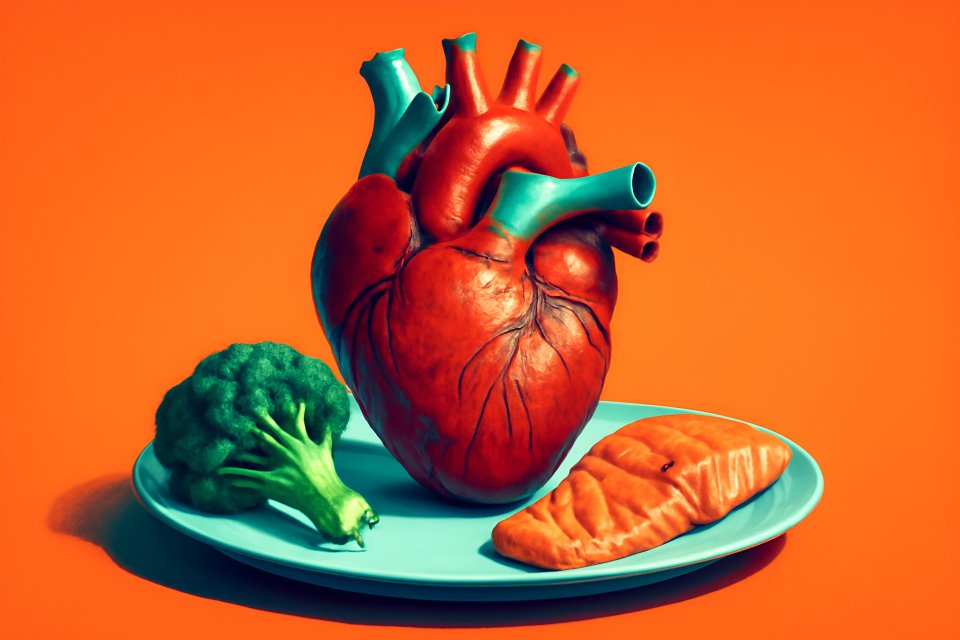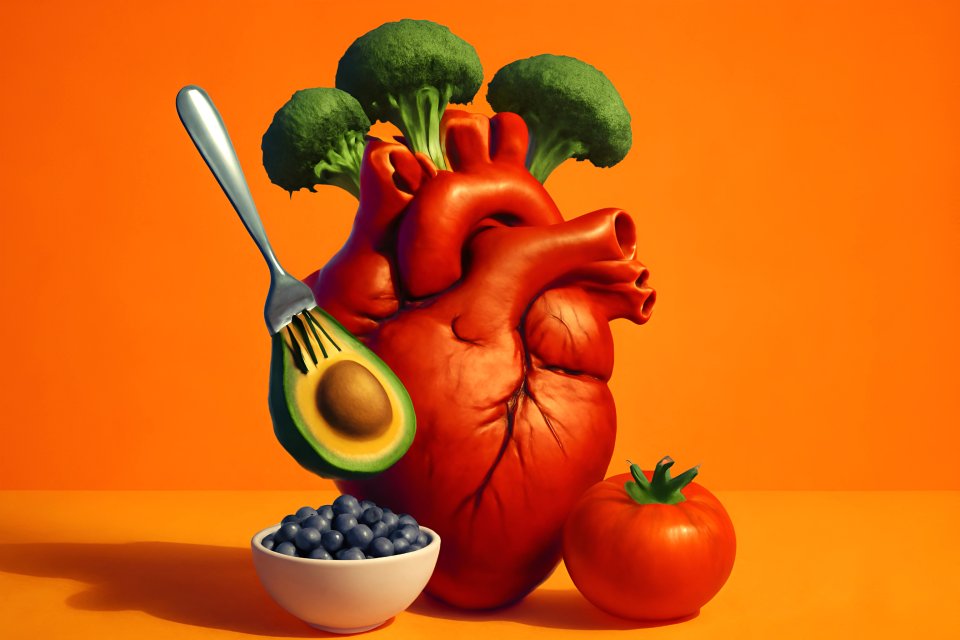
Introduction: You Have the Power to Nourish Your Way Through Menopause
Does it feel like your own body has turned against you? One moment you’re burning up with a hot flash that seems to come from nowhere, and the next you’re wrestling with a mood that plummets without warning. If you’re lying awake at night, wondering if this exhausting, unpredictable new reality is here to stay, you are not alone.
But here at FitOverFifty, we believe you are more powerful than you think. While menopause is a natural biological transition, you do not have to simply surrender to the discomfort and disruption. You have the power to take back control, and one of your greatest tools is sitting right on your plate.
This is your clear, no-gimmicks, step-by-step guide to managing menopause symptoms with nutrition over 50. We’re going to walk you through actionable, science-backed strategies that put you back in the driver’s seat of your own well-being, starting today.
The "Why": How Hormonal Shifts Affect Your Body & How Nutrition Can Help
So, what’s really going on inside? The primary driver behind this whirlwind of change is a natural decline in your estrogen levels. Think of estrogen as a master regulator that has spent decades keeping multiple systems in your body running smoothly.
When its levels drop, the effects ripple outwards. Your bones can lose density, increasing the risk for osteoporosis. Your metabolism may slow down, leading to that stubborn weight gain around the midsection that feels impossible to budge. Even your heart health is impacted, as estrogen provides a protective effect that is now diminished. And those infamous vasomotor symptoms—hot flashes and night sweats—affect up to 80% of women, disrupting life for a median of 7 to 10 years.
But here is the incredible news. The right foods contain specific nutrients that can help counteract these effects, providing your body with the support it needs to navigate this transition with grace and strength. A strategic approach to nutrition for menopause isn't just about eating healthy; it's about giving your body precisely what it's asking for.
Step 1: Build Your Foundation with Menopause-Friendly Foods
Focus on Phytoestrogens
Your first move is to introduce foods that contain phytoestrogens. These are remarkable plant-based compounds that gently mimic the effects of estrogen in your body, helping to fill the gap left by hormonal decline. Research shows that incorporating phytoestrogen-rich foods can be a game-changer for easing symptoms like hot flashes.
You don’t need exotic ingredients to get these benefits. Start by adding foods like flaxseeds, chickpeas, lentils, and soy products like tofu and edamame to your meals. Studies on soy isoflavones, for instance, show a consistent reduction in hot flash frequency, making these foods a cornerstone of your new nutritional strategy.
Prioritize Bone-Building Nutrients
One of the most critical concerns during menopause is protecting your bone health. Declining estrogen can accelerate bone loss, but you can fight back with a diet rich in calcium and vitamin D. These two nutrients work as a team to maintain bone density and strength, acting as your personal defense against osteoporosis.
Make a conscious effort to include dairy products like Greek yogurt or fortified plant-milks, dark leafy greens like kale and collard greens, and fatty fish like sardines in your diet. Aiming for the recommended 1,200 mg of daily calcium can significantly fortify your skeletal structure. Combining these foods with joint-friendly exercise creates a powerful defense for your long-term mobility and security.
Incorporate Healthy Fats for Hormone & Brain Health
Feeling foggy or finding your mood is all over the place? Healthy fats, particularly omega-3 fatty acids, are essential for brain health, hormone production, and taming inflammation. They are the building blocks for a sharper mind and a more stable mood.
Foods like salmon, mackerel, avocados, walnuts, and high-quality olive oil are packed with these beneficial fats. Incorporating them into your diet not only supports your cognitive function but also contributes to your cardiovascular wellness, a key consideration as estrogen's protective effects wane. For more ideas, explore these heart-healthy superfoods and recipes to make these fats a delicious part of your routine.
Lean Protein for Muscle Mass and Metabolism
Are you worried about losing strength or watching your metabolism slow down? Sarcopenia, or age-related muscle loss, is a common concern, but you can combat it with adequate protein intake. Protein is vital for maintaining lean muscle mass, which in turn helps keep your metabolism fired up.
Focus on high-quality lean protein sources at every meal. Think grilled chicken breast, fish, eggs, Greek yogurt, and plant-based powerhouses like lentils and beans. Ensuring you get enough protein helps you feel fuller longer, manage your weight, and maintain the strength you need to live an active, vibrant life. Pair your diet with adaptive resistance training to effectively maintain muscle and feel powerful in your body.
Step 2: Identify and Limit Symptom Triggers
This step isn’t about deprivation; it’s about empowerment. By mindfully reducing certain foods and drinks, you are making a conscious choice to feel better, sleep more soundly, and experience fewer disruptive symptoms. You are choosing peace over momentary pleasure.
Common Culprits for Hot Flashes
Do you ever feel like a hot flash comes out of nowhere? Sometimes, it has a specific trigger, and the most common culprits are spicy foods, caffeine, and alcohol. These substances can dilate blood vessels and affect the part of your brain that regulates temperature, igniting a hot flash or making an existing one feel more intense.
Studies show that simply avoiding these triggers can reduce symptom frequency by a remarkable 30-45%. Try swapping your afternoon coffee for a decaf or a soothing herbal tea. Instead of a glass of wine in the evening, which can also disrupt sleep, explore non-alcoholic alternatives or a calming cup of chamomile to support mindful habits for better sleep.
Manage Mood and Energy with Smart Carb Choices
The sugar-fueled energy crash is real, and during menopause, its effects on your mood can feel even more pronounced. Processed foods and snacks high in added sugars send your blood sugar on a wild rollercoaster, leading to irritability, fatigue, and cravings. These foods can also fuel inflammation, making other symptoms worse.
Instead, choose your carbohydrates wisely. Opt for complex carbs from whole grains, vegetables, and legumes, which provide a slow, steady release of energy. This simple switch helps stabilize your blood sugar, leading to more consistent energy levels and a more balanced mood throughout the day. This is a key part of boosting your metabolism with daily activities and feeling in control.
Step 3: Boost Your Diet with Superfoods and Key Supplements
Now that you’ve built your foundation and limited triggers, it’s time to bring in some targeted reinforcements. Certain "superfoods" are particularly potent for menopausal health, delivering a concentrated dose of the nutrients your body craves right now.
Spotlight on Superfoods for Menopause
- Flaxseeds: Just two tablespoons a day can provide enough lignans (a type of phytoestrogen) to reduce hot flash frequency by up to 50%. Grind them up and add to smoothies or yogurt.
- Berries: Packed with antioxidants called anthocyanins, berries like blueberries and raspberries help protect your brain and may improve cognitive function.
- Leafy Greens: Kale, spinach, and collards are champions of calcium and magnesium, supporting both bone health and relaxation.
- Cruciferous Vegetables: Broccoli, cauliflower, and Brussels sprouts contain compounds that help your body process estrogen in a healthy way.
A Responsible Word on Supplements
While a food-first approach is always best, supplements can sometimes help fill nutritional gaps. However, it is absolutely critical that you ALWAYS consult your doctor or a registered dietitian before starting any new supplement regimen. They can assess your individual needs and ensure there are no interactions with medications you may be taking.
Commonly discussed supplements for this life stage include Calcium and Vitamin D for bone support, Magnesium for its role in improving sleep and mood, and Omega-3s if you don't eat fatty fish regularly. Think of them as potential helpers, not magic bullets.
Step 4: Putting It All Together – Practical Menopause Dietary Tips
Knowledge is only powerful when you put it into practice. The goal is to make these changes feel seamless and sustainable, not like a chore. Here’s how to weave these principles into your daily life.
Hydration is Non-Negotiable
Water is your best friend during menopause. Staying well-hydrated can help reduce bloating, keep your skin supple, and may even help manage the intensity of hot flashes by supporting your body's ability to regulate temperature. Keep a water bottle with you at all times and sip throughout the day.
Eat Mindfully
This transition can be stressful, and stress itself can worsen symptoms. By practicing mindful eating, you connect with your body's true hunger and fullness signals, which can prevent overeating and support weight management. Take a moment to breathe before you eat, chew slowly, and savor the flavors of the nourishing food you’ve prepared. This practice is a cornerstone of stress-free living over 50.
Sample 1-Day Menopause-Friendly Meal Plan
To show you how simple and delicious this can be, here is an example of a day of eating. Use this as inspiration to build your own perfect day. For more ideas, check out these balanced breakfasts for seniors.
| Meal | Example | Key Benefits |
|---|---|---|
| Breakfast | Greek yogurt with berries and 1 tbsp of ground flaxseed. | Protein, Probiotics, Antioxidants, Phytoestrogens |
| Lunch | Large salad with grilled chicken, chickpeas, avocado, and olive oil vinaigrette. | Lean Protein, Fiber, Healthy Fats, Calcium |
| Dinner | Baked salmon with roasted broccoli and a small sweet potato. | Omega-3s, Vitamin D, Hormone Support, Fiber |
| Snack | A handful of walnuts or an apple with almond butter. | Healthy Fats, Protein, Fiber |
Conclusion: Embrace This New Chapter with Confidence and Vitality
You now have a clear, four-step plan to reclaim your sense of well-being. You know how to build your foundation with menopause-friendly foods, limit the triggers that make you feel worse, boost your diet with powerful superfoods, and put it all into practice with simple, daily habits. This is how you start feeling like yourself again.
Remember, this journey of managing menopause symptoms with nutrition is not about achieving a perfect diet overnight. It’s about making small, consistent, and compassionate choices that honor what your body needs. This is a new chapter, and with the right nourishment, it can be one filled with incredible energy, confidence, and vitality.
What's one nutritional change that has helped you? Share your top tip in the comments below!
For more expert advice on thriving after 50, sign up for the FitOverFifty weekly newsletter












